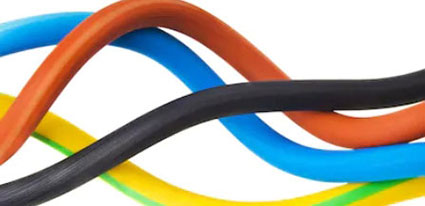Not sure which type of phase you have in your building? Or which type you need to have installed?
Depending on your electrical needs and whether you own a commercial, industrial, or residential property — the phase you use for your electrical wiring will differ.
While it is possible to have two phases, single-phase and three-phase are the standards for electrical wiring.
What is a ‘phase’ in electricity?
A phase is the current that the electrical wires in buildings provide. This is an alternating current, which means the voltage is alternating between peaks and troughs. When you draw it out on a graph, it will be a sine curve.
Depending on the frequency in your country, the time between each period (from one peak to another) will vary. In Australia, we use 50Hz and this means that this alternating pattern will occur 50 times each second.
What is single phase electrical wiring?
Single-phase electrical wiring is the standard electrical wiring option in residential homes.
The reason for this is because the power demanded by homes is much lower in terms of the voltage required in total and per appliance.
If you draw out a single phase, it will be a single sine wave with a voltage of roughly 240 volts. This is suitable for most appliances at home, including ovens, TVs, computers, and more.
The benefits of choosing single phase electrical wiring includes increased efficiency when using up to 1000 watts, decreased cost of design and installation, and greater flexibility overall.
However, one major downside is that due to the single-phase, it is not as consistent at its delivery of power. This can be a major issue when dealing with specialised appliances which would require three-phase electricity.
The wiring in a single-phase design includes three wires. There are two hot wires and one neutral wire. Each of the two hot wires will have 120 volts (roughly 240 volts in total).
What is three-phase electrical wiring?
As the name suggests, three-phase electrical wiring is similar to a single-phase design, except there are three phases instead.
These three phases will have a 120º difference between each to be evenly spread apart. When they are added together, they equal zero.
For industrial and commercial buildings, three-phase electrical wiring is essential. There are several reasons for this:
Increased efficiency. In a three-phase system, there is less conductor material necessary to transmit electricity for usage.
More power. For industrial and commercial environments, there are appliances that demand greater power. These could include machinery that needs more than 2 kilowatts of power. For example, if an appliance requires 30,000 watts, it will be divided into 3 phases, equalling 10,000 each phase. Compare this to 30,000 watts in a single phase, you can see how three-phase electrical wiring has a much greater capacity.
Which type of electrical wiring should I use?
In general, a single-phase electrical wiring system should be used for residential homes. However, if you require appliances which demand greater power, such as kilns or strong air-conditioning ducts — then you may consider a three-phase system.
Three-phase supplies should always be installed in commercial and industrial environments. Even if you don’t require it now, it’s better to future proof your location and have it installed. Some examples of areas where three phases are essential to include power grids, phone towers, data centres, aircrafts, and more.



